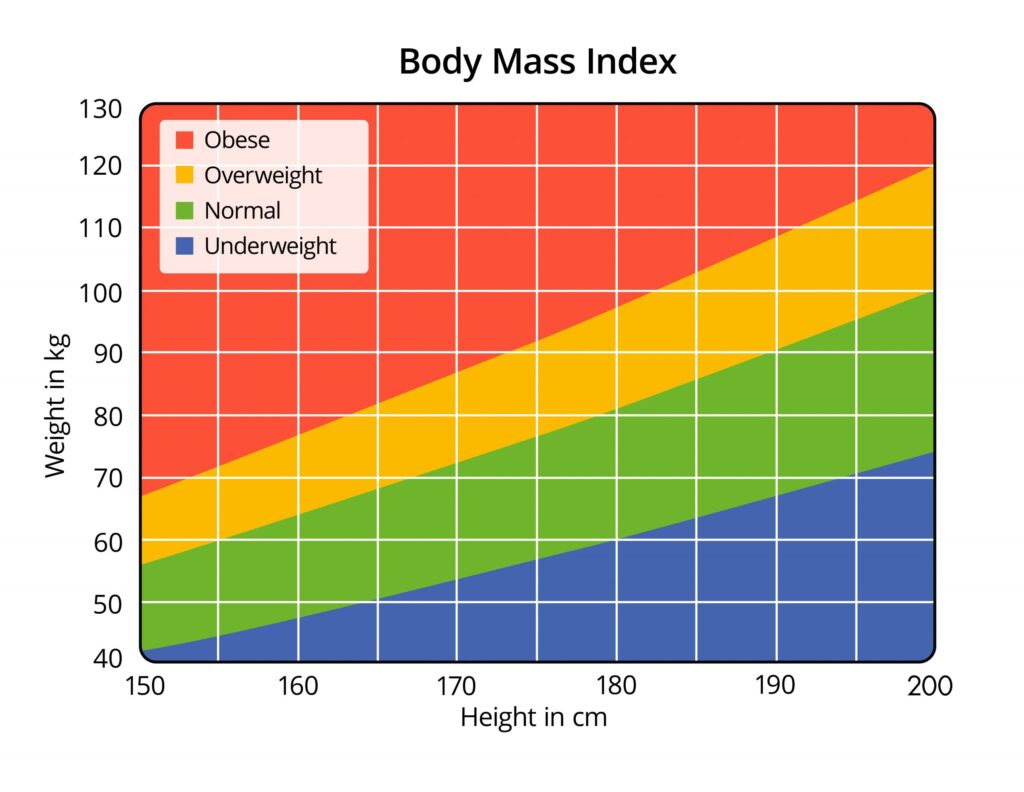Body Mass Index (BMI) is a widely used tool for assessing an individual’s body weight relative to their height. It provides a simple and convenient method for categorizing individuals into different weight status categories, ranging from underweight to obese. In this comprehensive guide, we’ll delve into the details of Body Mass Index, exploring its calculation, interpretation, limitations, and implications for health. Let’s get started.
What is Body Mass Index (BMI)?
Body Mass Index (BMI) is a numerical value calculated based on an individual’s weight and height. It is expressed as a ratio of weight (in kilograms) to height (in meters) squared. Height is commonly measured in centimeters, divide height in centimeters by 100 to obtain height in meters.

Alternatively, BMI can be calculated using weight in pounds and height in inches in the same manner. You can try to get your BMI by using online BMI calculators. There are tons of them available in Google. Once calculated, BMI is used to classify individuals into different weight status categories, which are typically defined as follows:
- Underweight: BMI less than 18.5
- Normal weight: BMI 18.5 to 24.9
- Overweight: BMI 25 to 29.9
- Obesity (Class I): BMI 30 to 34.9
- Obesity (Class II): BMI 35 to 39.9
- Obesity (Class III): BMI 40 or higher
Interpreting Body Mass Index
Body Mass Index serves as a screening tool to assess an individual’s weight status and identify potential health risks associated with excess body weight. While BMI is not a direct measure of body fat percentage or overall health, it provides a useful estimate of relative weight status and is often correlated with health outcomes. Interpretation of BMI categories is as follows:
Underweight
Individuals with a BMI below 18.5 may be at risk of malnutrition, nutrient deficiencies, and other health problems associated with insufficient body weight.

Also Read: How to Gain Weight Healthily – 5 Best Tips!
Normal weight
Individuals with a BMI between 18.5 and 24.9 are considered to have a healthy weight range, with a lower risk of weight-related health conditions.

Overweight
Individuals with a BMI between 25 and 29.9 are classified as overweight, indicating excess body weight that may increase the risk of developing health problems like heart disease, diabetes, and hypertension.

Obesity (Class I, II, III)
Individuals with a Body Mass Index of 30 or higher are classified as obese and may be at increased risk of obesity-related health conditions, including cardiovascular disease, stroke, type 2 diabetes, and certain cancers. The severity of obesity is further categorized into Class I, II, or III based on BMI range, with higher classes indicating greater levels of obesity and associated health risks.
Don’t Miss: How To Lose Weight Fast?! – Follow This!
Limitations of Body Mass Index
While BMI is a useful screening tool for assessing weight status and identifying potential health risks associated with excess body weight, it has several limitations that should be considered.
Does not account for body composition
BMI does not differentiate between fat mass and lean body mass, meaning that individuals with high muscle mass or bone density may be classified as overweight or obese despite having a low body fat percentage.
Does not consider distribution of body fat
Body Mass Index does not take into account the distribution of body fat, which is an important factor in determining health risks. Central or visceral adiposity (abdominal fat) is associated with a higher risk of metabolic syndrome, cardiovascular disease, and type 2 diabetes, regardless of overall BMI.
Not suitable for certain populations
BMI may not be an accurate measure of weight status for certain populations, including athletes, older adults, pregnant women, and individuals from diverse ethnic backgrounds. Alternative methods, such as waist circumference measurement or bioelectrical impedance analysis, may be more appropriate for these groups.
Does not capture changes in body composition
BMI is a static measure that does not account for changes in body composition over time, such as fluctuations in muscle mass, fluid retention, or bone density. Therefore, changes in BMI alone may not accurately reflect changes in overall health or fitness.
Implications for Health and Wellness
While Body Mass Index is a useful tool for assessing weight status and identifying potential health risks associated with excess body weight, it should be interpreted in conjunction with other measures of health and well-being. Individuals with a high BMI should consult with a healthcare professional to evaluate their overall health status, assess their risk factors for chronic diseases, and develop a personalized plan for weight management and lifestyle modification.

Maintaining a healthy weight through balanced nutrition, regular physical activity, adequate sleep, stress management, and other lifestyle factors is essential for promoting overall health and reducing the risk of obesity-related health conditions. By adopting healthy habits and making sustainable changes to their lifestyle, individuals can improve their BMI and enhance their quality of life.
The Bottom Line
In conclusion, Body Mass Index (BMI) is a valuable tool for assessing weight status and identifying potential health risks associated with excess body weight. While BMI has limitations and should be interpreted in the context of individual health and lifestyle factors, it provides a useful framework for evaluating weight-related health risks and guiding interventions for weight management and disease prevention. By understanding Body Mass Index and its implications for health and wellness, individuals can take proactive steps to maintain a healthy weight and optimize their overall well-being. Hopefully, you found this article helpful enough. If you really did then let us know your valuable thoughts in the comment section down below. Thanks for visiting and appreciating our work.
